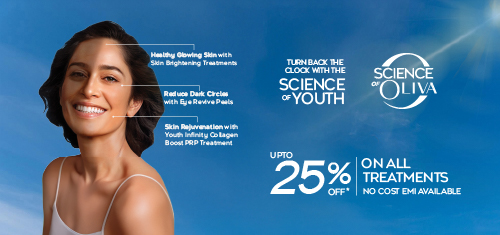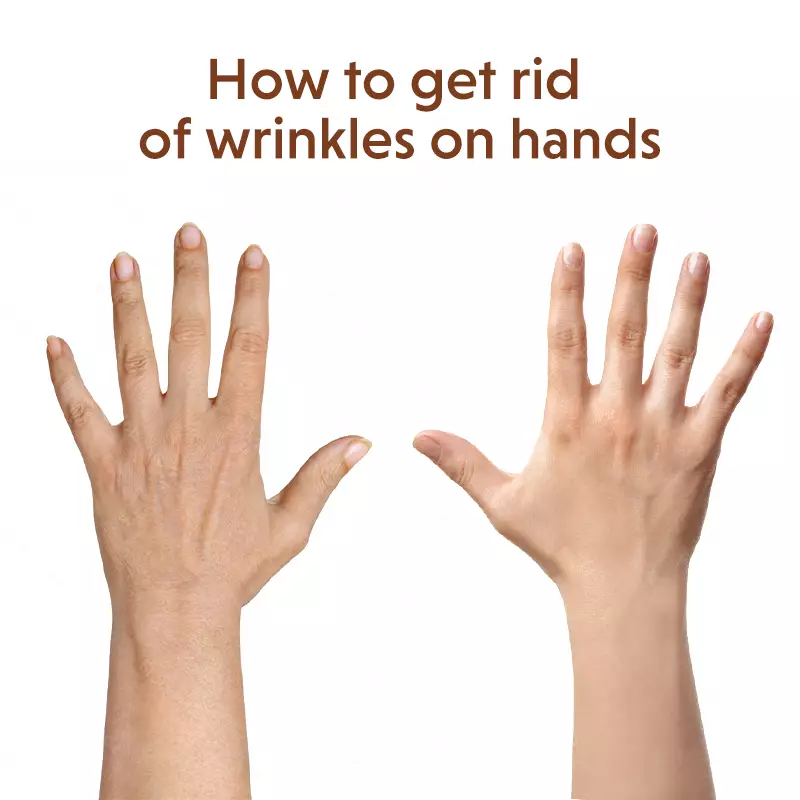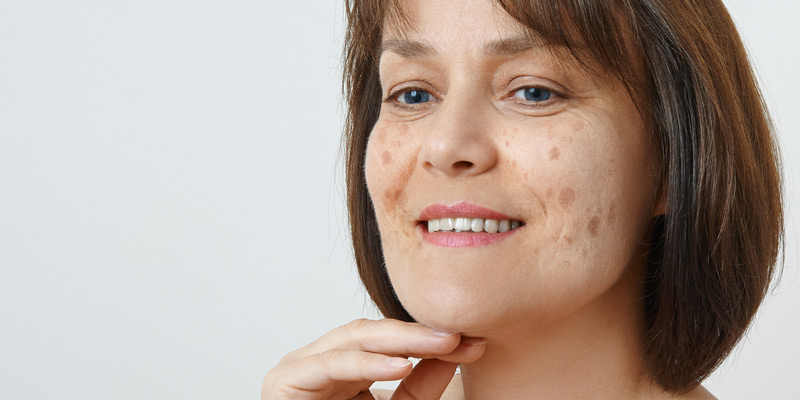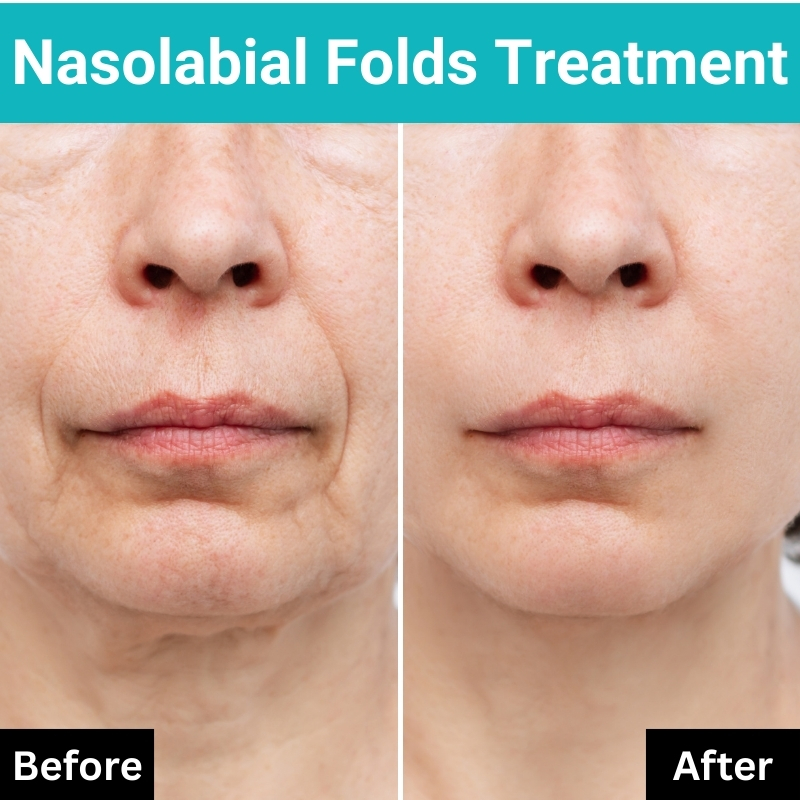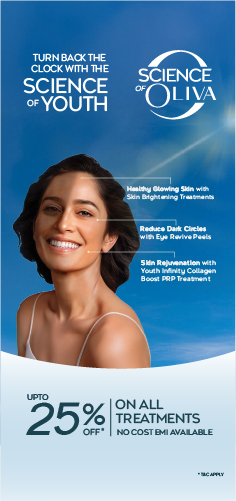In This Article
Dermal Fillers Under Eyes: Cost, Benefits, Results & Procedure
Ageing leads to the loss of two structural proteins in the cells – collagen and elastin. These proteins give our skin its firmness and elasticity. The decrease in the production of these proteins impacts eye contour significantly. The skin becomes thinner, and blood vessels start showing up in the area. Many people also experience fat pad loss, which further gives the sunken or hollow eye look. Ageing also leads to dehydration, which dulls the skin and accentuates the hollows of the eyes. The article will explain everything about dermal fillers and why dermal fillers under eyes treatment is the best solution for such concerns.
In This Article
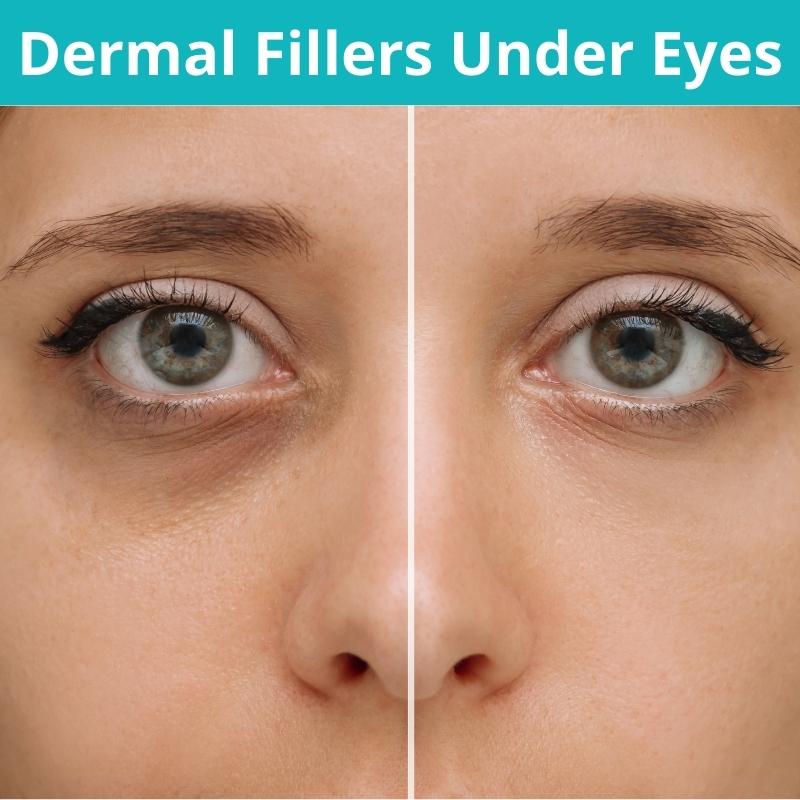
What Are Dermal Fillers?
Dermal filler treatment is a non-surgical procedure that uses filler injections to plump up fine lines and wrinkles and boost volume in your face. Dermal fillers help enhance the overall facial features and look youthful.
What Is Under eye Filler?
Under eye fillers or tear trough fillers are specifically used to plump and brighten the eye contour. Dermatologists inject these fillers directly near the site to reduce hollowness, which makes one look less tired.
Types of Under eye Fillers
There are many types of under eye fillers:
- Hyaluronic acid fillers: Hyaluronic acid is a naturally occurring substance in the cells that provides hydration. HA fillers greatly support the structural protein collagen in the cells, which helps boost volume. These are the most commonly used dermal fillers under eyes.
However, the effects provided by hyaluronic acid fillers stay for a short duration. One needs multiple sessions of HA fillers.
- Poly-L Lactic acid: It is a synthetic filler that helps boost the body in the production of collagen. These fillers are also great at smoothening out wrinkles and fine lines. The results may last up to a year.
However, they are thicker than HA fillers and may cause lumps under the skin.
- Calcium hydroxylapatite (CaHA): It is a biocompatible dermal filler that contains a compound found in our bones. It also helps boost collagen production and supports the connective tissues in the cells, offering additional support. This filler is thicker than HA filler and may cause nodules. These powerful fillers smooth out wrinkles, and the results can last for up to a year.
- Polymethylmethacrylate (PMMA): This filler comprises collagen and tiny balls that stay under the skin to keep it firm throughout.
Benefits of Under eye Fillers
Here is a list of key benefits of fillers under eye:
- Restores volume: With ageing, losing collagen protein in the cells and fat pads is natural. This leads to a sunken eye look, and they look much tired. Dermal eye fillers enhance the eye contour and add volume to the area so they look rested.
- Reduced dark circles: As the hollowness around your eyes deepens, they look aged or tired. Under eye fillers in such areas will plump it right away and give a fresher and more youthful appearance.
- Improved skin hydration: Another critical aspect of ageing is loss of hydration. With hyaluronic acid dermal eye filler, the skin under the eyes looks more supple and invigorating. These fillers also help in reducing fine lines.
- Long-lasting results: Under eye fillers such as Poly-L Lactic acid fillers show improvements that remain for a long time, preferably up to a year.
- Natural results: The best thing about dermal under-eye fillers is that the result looks very natural, and they are not easy to detect. When carefully injected by an experienced professional, the results are top-notch.
- Customisable: Under eye filler treatment can easily be customised to one’s requirement or achieve desired outcomes. An experienced professional takes a tailored approach to customise the best for the client.
- Boosts confidence: Getting dermal under-eye filler is the surest way to boost confidence, as one looks brighter and youthful.
- Non-surgical with less downtime: It is a simple non-surgical cosmetic procedure with minimal downtime. One may experience temporary swelling or bruising. In addition, most people can resume their daily activities after the session.
Alternative Treatments To Dermal Fillers Under Eyes
There can be several alternative treatments to under eye fillers. These include:
- Chemical Peels: Chemical peels use natural extracts with peeling solutions to address different skin concerns. TCA peel or glycolic acid peel helps eliminate dark circles, lighten pigmentation and improve eye contour. However, these require multiple sessions to show visible improvements.
- Laser therapy: Laser therapy uses laser light of a specific wavelength to target the affected area and pigmentation. The treatment also boosts collagen production by causing micro-injuries in the cells, promoting the growth of healthy cells. Laser treatment is widely used to reduce dark circles and brighten up the eye contour.
- Topical treatment: There are several topical products, such as serums, creams and gels, available to smooth out the fine lines around the eyes and reduce dark circles. These products usually contain active ingredients such as vitamin A, vitamin C and hyaluronic acid.
- PRP therapy: PRP or Platelet-rich plasma therapy is a revolutionary procedure that requires one’s own blood to stimulate collagen production and cell renewal. It also reduces dark circles, increases skin firmness and enhances overall texture.
How Much Do Under Eye Fillers Cost In India?
The dermal fillers under eyes cost ranges from INR 15,000 to INR 30,000. The cost of under eye filler varies for every individual. It depends on several factors like ageing, the type of fillers, the quality of filler, the total number of sessions required and the type of treatment. Different fillers come in various price ranges. It is also essential to consider the physician’s level of experience and reputation of the clinic. Lastly, the type of equipment used during the procedure also adds to the complexity of the price.
When Is Under eye Filler Not The Best Option?
Not every person is an ideal candidate for under eye filler options. In people with droopy eyes or thin skin under the eyes, fillers rarely show any improvement. Instead, the dermatologist may suggest some alternative treatment options, such as topical treatments in the form of retinol creams and peptide-based serums to improve the eye contour.
Chemical peel treatment is another popular treatment used to diminish dark circles and brighten the eye area. Laser treatment and PRP therapy also provide a youthful look to the eye.
Dermal Fillers Under Eyes Procedure
The under eye fillers procedure involves different steps based on the type of filler used. In general, these steps include:
- Consultation: The procedure begins with a consultation with the dermatologist to assess the concern and under eye area skin. The dermatologist will also review one’s medical history to determine the appropriate treatment.
- Preparation of the site: The treatment session starts with cleaning the target area. The dermatologist may also apply numbing cream to reduce any discomfort.
- Injection: Next, the dermatologist will inject filler into the under eye area using a fine needle and distribute the filler evenly. The process takes around 20 to 30 minutes.
- Post-procedure: After the session, the dermatologist will give you instructions to follow. These include avoiding strenuous activities and sleeping upright to prevent swelling.
How Does Dermal Fillers Under Eyes Compare With Botox?
| Feature | Under eye Filler | Botox |
| Primary Use | Hollowness, dark circles, volume loss | Dynamic wrinkles (crow’s feet, forehead lines) |
| Mechanism | Adds volume, plumps skin | Relaxes muscles, prevents movement |
| Duration | 6 to 12 months | 3 to 4 months |
| Downtime | Minimal | Minimal |
| Side Effects | Swelling, bruising, lumpiness, Tyndall effect | Bruising, eyelid droop, headaches |
How To Prepare For The Procedure If You’re Getting Under-eye Filler?
It is crucial to follow these instructions before the treatment begins to ensure a smooth session:
- Avoid consumption of alcohol 3 days before the treatment.
- Avoid medications such as blood thinners at least 1 week before the treatment.
- Avoid consumption of herbal supplements such as fish oil.
- Stop consuming non-steroidal medications such as Advil, aspirin, and Ibuprofen.
- Lessen salt intake in food, as salty food will retain water and cause swelling.
- Avoid using any hair depilatory treatment or waxing a minimum of 2 days before the treatment.
- Avoid taking any chemical peel, laser, or any other skin treatment.
- Make sure to let your physician know your complete medical history, especially if you have cold sores.
- The treatment is not recommended for pregnant and breastfeeding women.
Apart from the above precautions, it is essential to follow these post-procedure care tips to ensure a smooth recovery:
- It is common to experience some bruising or tenderness at the treated site. The symptoms may disappear within a few days. Avoid rubbing or massaging the area.
- Avoid taking sauna baths for at least 15 days after the treatment.
- Avoid unnecessary exposure to sun and heat for the next three days.
- Do not apply any cream, gel, or anything to the skin on the day of the treatment.
- Avoid sleeping on the stomach for 2-3 days to reduce swelling.
- Do not take any laser or skin treatment until one month after the procedure.
- Apply a broad-spectrum sunscreen after consultation with the dermatologist.
- Contact your physician immediately if you experience extreme pain, redness, swelling, or lumping.
Frequently Asked Questions On Dermal Fillers Under Eyes
Under eye fillers last anywhere between 6 months to a year.
Under eye fillers are a good idea for those looking to enhance the eye contour, but they are not for everyone.
When administered by an inexperienced physician, under eye fillers may lead to bruising, formation of lumps and nodules under the skin, and swelling.
Under eye filler treatment is a virtually painless procedure.
People with loose skin, thin skin under the eyes, bleeding issues, and poor lymphatic drainage are not good candidates for under-eye fillers.
Hyaluronic acid fillers are the softest and look most natural underneath the eyes.
Yes, one can sleep after getting under eye fillers, but in an upright position.
Yes, under eye fillers are generally considered safe.
The success rate of under eye fillers is relatively high.
It is very rare, though not impossible, to lose vision from under-eye filler.

